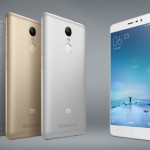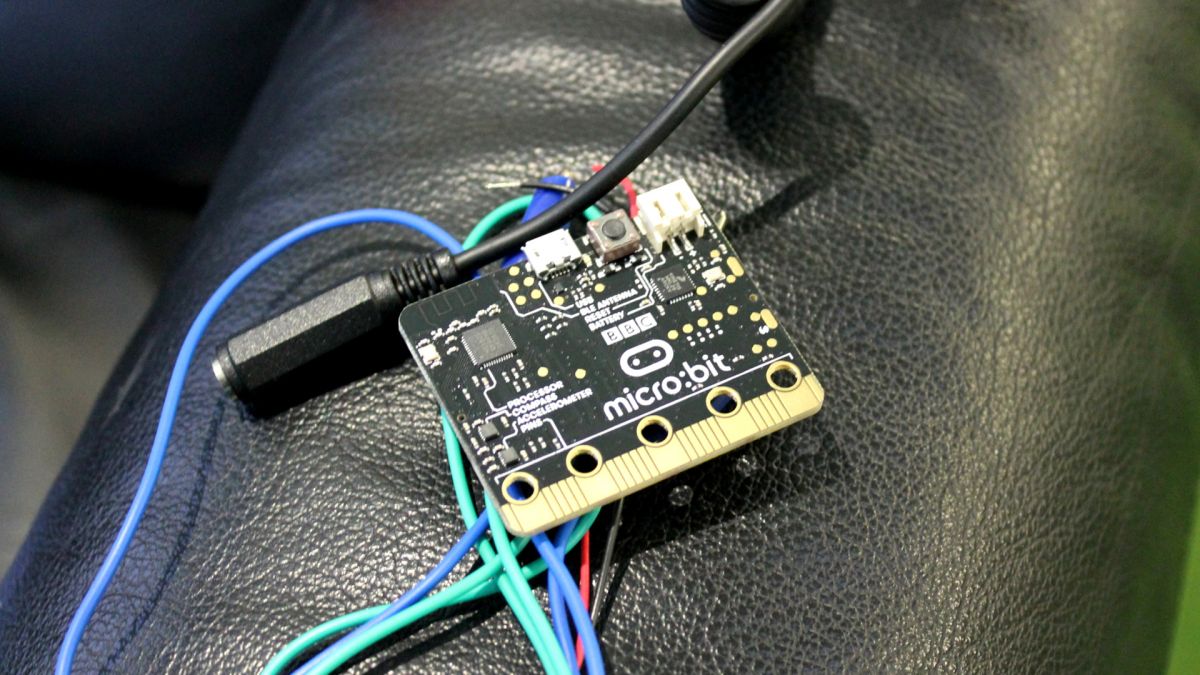
Introduction and design
Curved, ultra-wide monitors with a 21:9 aspect ratio have only become available recently, providing some interesting competition for 16:9 displays that have been standard for at least a decade. While 4K is the loudest buzzword in the industry, this new display format is a genuine alternative, and so far is proving very popular for gaming and movie watching.
Philips is the latest manufacturer to enter this market with the Brilliance BDM3490UC, a 34-inch 21:9 monitor with an IPS (in-plane switching) panel and a screen resolution of 3,440 x 1,440. As with some (but not all) similar 21:9 displays, it has curved edges, bringing the furthest parts of the screen into your peripheral vision.
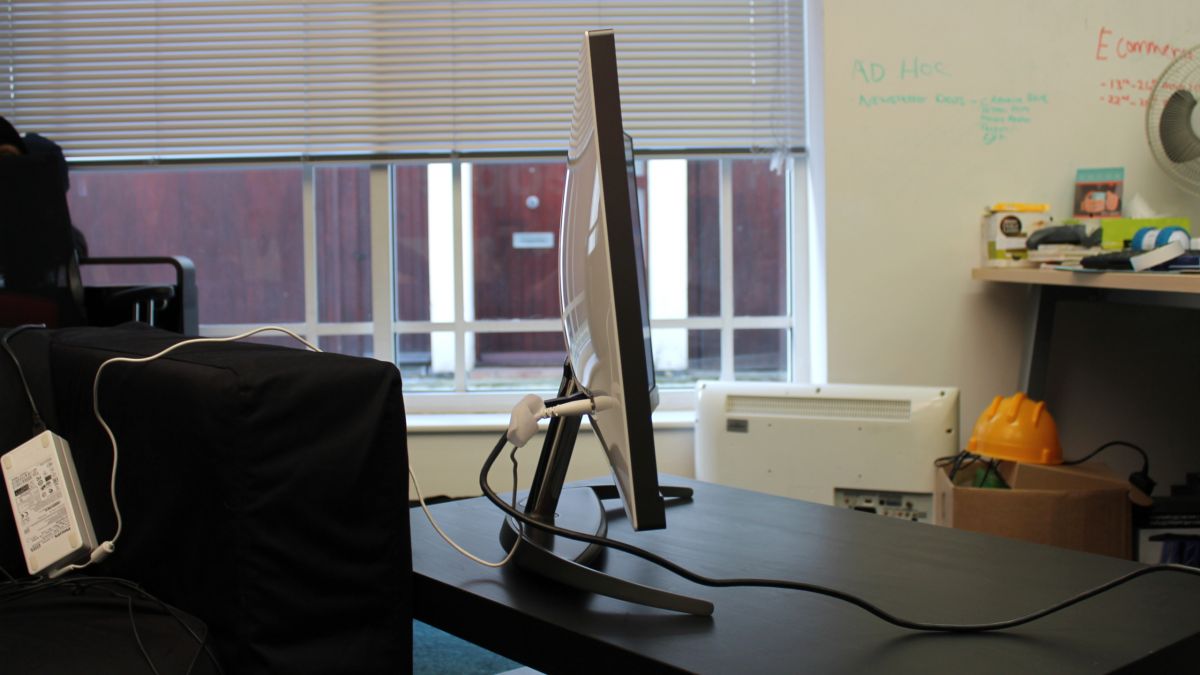
Aside from the screen technology, the BDM3490UC is a premium monitor in every way, with superb build quality, a very attractive design and great sounding speakers too. But at £670 (around $960, AU$1,350) it’s quite expensive. On average, 21:9 ultra-wide displays can cost more than 4K screens do now, given how the latter technology has fallen in price considerably over the last 12 months.
Another 34-inch curved monitor, the Dell UltraSharp U3415W, still costs £699 ($980, AUS$1,370) when bought direct from Dell – and that’s almost one year after it initially launched. You can pick it up for £50 ($80/AUS$130) cheaper through online retailers. Dell’s model offers brilliant picture quality but is a good deal chunkier (and heavier) than the Philips Brilliance BDM3490UC.
Design
The first thing you’ll notice when you take the Brilliance BDM3490UC out of its box is how utterly huge it is. A 34-inch ultra-wide monitor takes up a lot of space, and these dimensions will dominate most desks.
The aforementioned 3,440 x 1,440 pixel-resolution is like a wider version of a standard 27-inch 1440p monitor, adding 3.5-inches and 440 pixels to each side. The effect is similar to having dual displays, albeit with no annoying bezel in the middle.
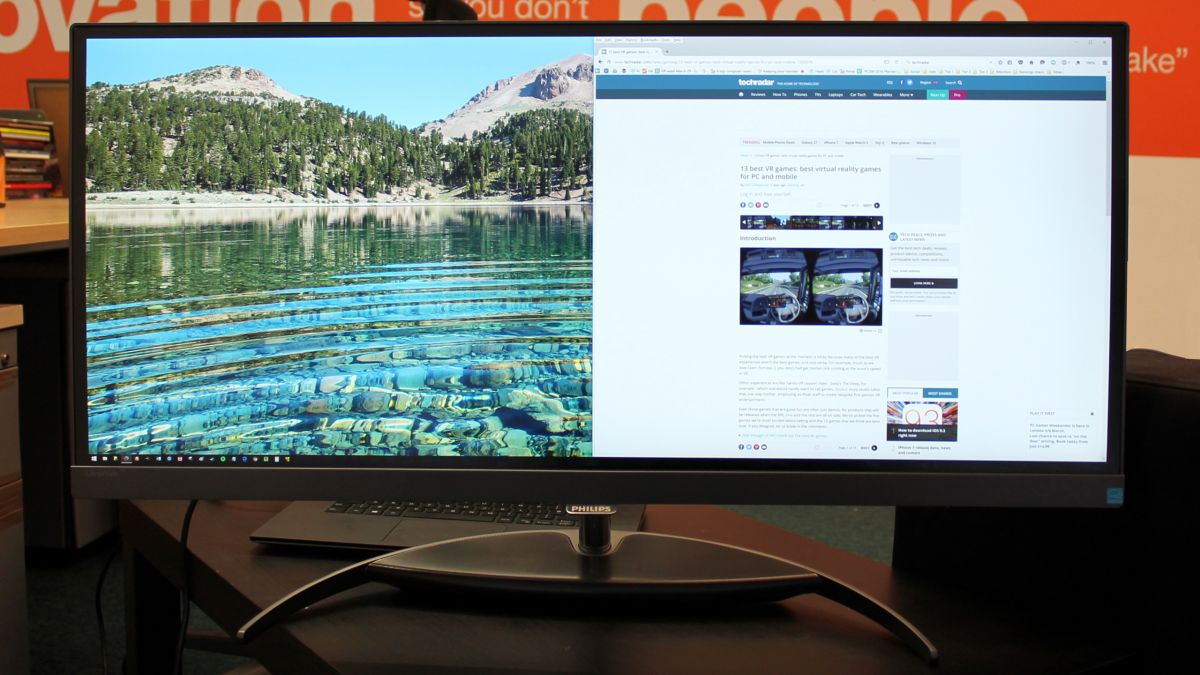
The front of the monitor is black, with a slightly lighter grey tone at the lower section. At the rear it’s white, covered in very glossy and reflective plastic, which looks really good.
It has a large stand to support the weight of the screen, which has been designed like a crescent moon. The support strut connecting it to the screen is made from solid metal. The screen’s height cannot be adjusted, but it does tilt back and forth.
There are four display inputs at the rear, including a generous array of three HDMI ports, only one of which is HDMI 2.0, and there’s a DisplayPort 1.2 connector as well. As with any 4K screen, those are the only two connectors that can drive the BDM3490UC at its full native resolution at 60Hz. If you connect a computer to either of the HDMI 1.4 ports, you’ll be limited to 30Hz, which means very choppy mouse movement, unless you lower the resolution. Additionally there’s a USB 3.0 hub with four ports.

Built-in audio is provided with two 7W speakers, which sound excellent compared with a lot of displays, and these support DTS as well. If you want external sound, a pair of 3.5mm input and output jacks are there too.
Lastly, there’s a small 4-way joystick located right underneath the bezel to control the on-screen menus, and this makes it much easier to flip through the lists of options and settings than the more traditional method of using separate buttons to move up and down through menus, as seen on most displays.
Display performance
Picture quality is quite obviously the main test for any computer screen, and in this area, the Philips Brilliance BDM3490UC absolutely excels. We mentioned it has an IPS panel – this is opposed to TN (twisted nematic) or less commonly, VA (vertical alignment) technology.
You’re bound to run into these terms when shopping for any display, and while the technical differences between them are dull, the practical differences are important.
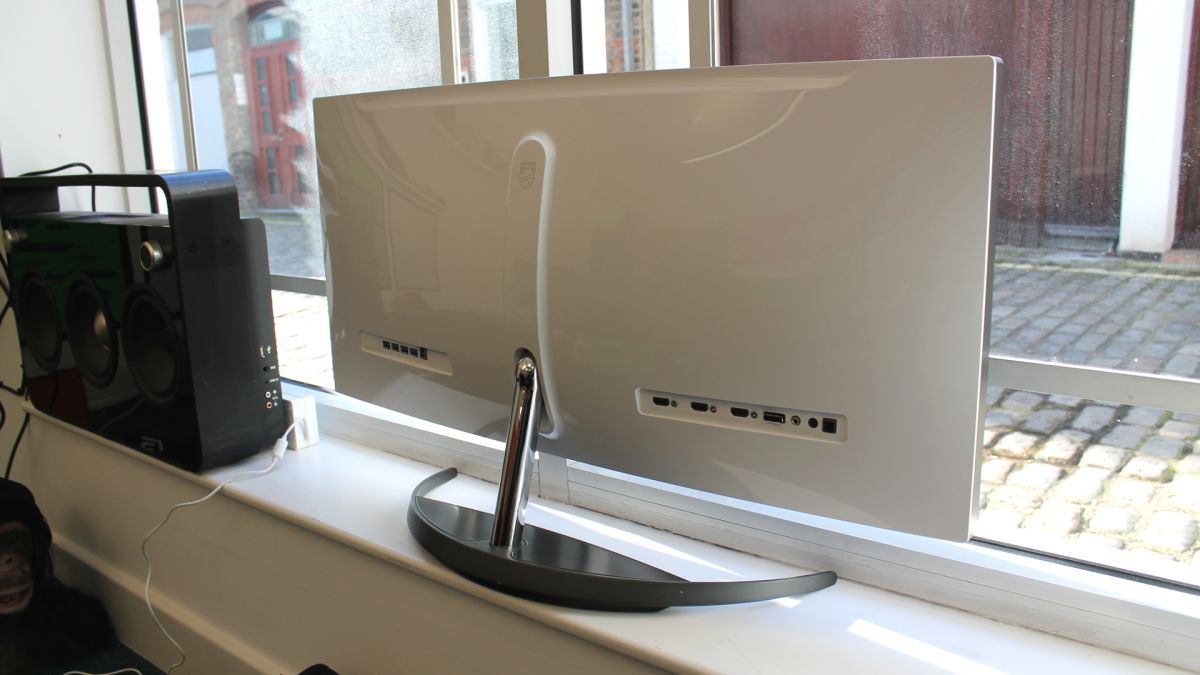
They differ mostly in the areas of brightness and viewing angles, with IPS being generally far superior in these areas, while VA technology presents the best contrast and black levels. Although some IPS displays suffer from backlight bleed, it is this panel technology that usually delivers the best all-round picture quality, although that’s not to say there aren’t any good TN or VA panels on the market.
We tested the BDM3490UC using a DataColor Spyder 5 colorometer, a device that measures aspects of a screen such as its brightness, contrast and colour accuracy, and here the results come out very well — at least compared with many conventional displays. Brightness of 340 cd/m2 (or candelas) is a good result that’s comparable with most modern IPS screens, and the contrast level of 750:1 is considerably better than average.
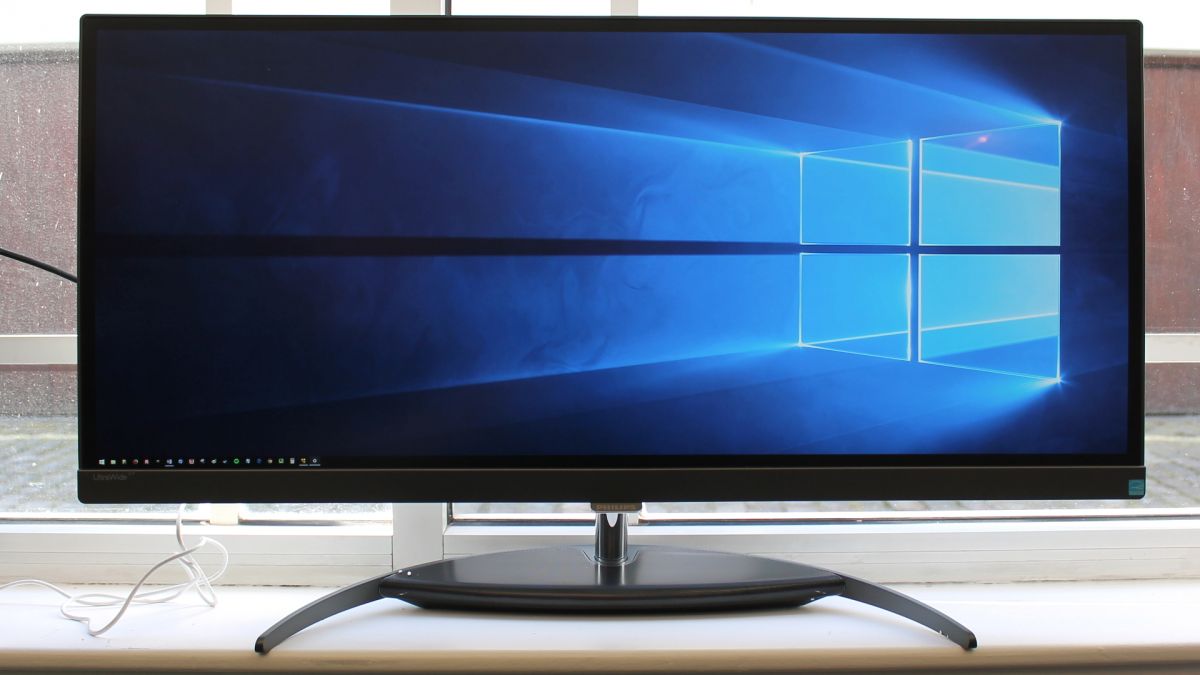
When using the screen, we were also impressed by the picture quality. The Windows desktop looks great, with a bright sharp picture, and of course, plenty of space to work on. Movies look really good, especially if they’re modern titles filmed in widescreen, although any 4:3 content means large vertical black bars at the sides. Without some ugly cropping, this is something you’ll just have to live with.
There are plenty of settings to customise the image quality, way beyond just simple brightness controls. There are six presets such as ‘office,’ ‘game’ and ‘movie’ with a range of colour temperatures to choose from, alongside an sRGB mode, and a smart contrast setting.
PiP and settings
Notably, there’s also a PiP (picture-in-picture) mode that lets you view a second display input in the corner. You can keep an eye on a download on a second PC while playing an Xbox One or PS4 game on the main screen, for example.

But with a 21:9 screen, we note that any 16:9 sources are stretched, and look a bit odd, but there is a setting to prevent this from happening, forcing devices such as games consoles to 16:9 mode.
Lastly, a hugely important point worth noting about the menus is the setting for the DisplayPort version. By default this is set to DisplayPort 1.1, which limits the refresh rate to 30Hz at the native 3,440 x 1,440 resolution, and for PC use, any less than 60Hz will mean very choppy mouse movement. Changing this setting to DisplayPort 1.2 should be the very first thing you do when you initially turn on the Philips Brilliance BDM3490UC.
Verdict
Although the conventional display market is saturated with so many products that it can be really hard to choose any single one, there still aren’t that many 21:9 screens out there. Most manufacturers only have one in their product line-up, and therefore they throw everything at it, making it a flagship model with excellent picture quality and great design without any corners cut. That seems to be what Philips has done here, ensuring even the built-in audio is top notch.
We liked
There’s certainly plenty to like here, with the image quality itself being the most compelling point. The picture is sharp and bright, and everything from the Windows desktop through to games and movies looks great. We also really appreciated the design of this monitor, and the neat extras such as the little joystick for controlling the on-screen menus and the above-average integrated speakers.
We disliked
Gamers may be disappointed with the refresh rate, and the fact that no anti-stuttering technology such as Nvidia’s G-Sync or AMD’s FreeSync is included. This is also a pretty big monitor which will dominate your average desk, and there’s a minor design niggle in that you can’t adjust its height.
Final verdict
There’s no doubt about it: the Phililps Brilliance BDM3490UC is a great monitor. But how does it compare to the competition from firms like Samsung and LG, who are taking a similar approach with their own high quality 21:9 screens? Refresh rates of 60Hz and IPS technology are generally standard across all good quality displays, so there’s no single unique feature that makes the BDM3490UC stand out.
Manufacturers of gaming displays such as Acer and Asus are pushing refresh rates beyond 60Hz and including technology such as Nvidia G-Sync, but the Brilliance BDM3490UC lacks these advanced gaming features. However, if you want those gaming features, you have to pay considerably more for them.
Although no ultra-wide 21:9 display could be called cheap, the Philips Brilliance BDM3490UC is reasonably good value when compared with some of its competition. Given the great picture and excellent build quality, that makes it a very compelling offering. If this ultra-wide 21:9 form factor appeals to you, then this screen should be at, or at least near, the top of your shopping list.
Source: techradar.com





































